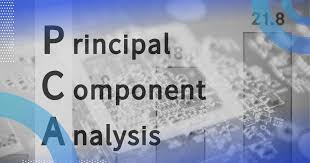In today’s competitive labor market, quality compensation packages are becoming increasingly important to an organization’s success. Employee benefits and perks help keep employees happy, and a competitive remuneration package can be an effective strategy for attracting and retaining talent.
Employee benefits come in a variety of shapes and sizes. Some are mandated by legislation, while others are discretionary. If you are in charge of employee benefits at your firm, you should be familiar with the many options available.
We’ll explain what employee benefits are, why they’re vital, and how much they cost in this blog. We’ll also go through the most common types of employee benefits and how to properly handle them.
In our comprehensive guide, you may learn about additional fringe benefits you can provide.
What are Employee Benefits?
Employee benefits are any perks or remuneration given to employees in addition to their base salaries and earnings. A comprehensive employee benefits package may include health insurance, life insurance, paid time off (PTO), profit sharing, retirement benefits, and other benefits. Employee benefits are defined as any form of indirect pay provided to an employee, whether mandated or voluntary.
Certain employee benefits are mandated by law. Employers, for example, must contribute to their employees’ Social Security and Medicare. Perks or fringe benefits are extra benefits that go above and beyond the requirements.
The rules regulating sick leave and covering remote work expenditures varied from state to state. There are, however, common benefit requirements that all businesses must observe.
What is the Importance of Employee Benefits?
Most businesses must give basic employee benefits in order to comply with regulatory requirements, but providing the bare minimum is insufficient. Employers who provide a comprehensive employee benefits package have the following benefits:
#1. Attracting talent
While two positions may pay the same, their benefits can vary substantially. Your benefits package can set your company apart as an employer. In their job hunt, 88% of job seekers examine health, dental, and vision insurance benefits, as well as flexible hours. Candidates will consider the worth of benefits in addition to base salary to determine which employees will put them in the greatest financial situation.
#2. Improving employee retention:
Employee benefit options differ by firm, and some will better suit employees’ needs than others. Employees are more inclined to stay with an employer when their requirements are addressed. As a result, organizations with excellent ratings for remuneration and benefits have 56% lower employee turnover.
#3. Fostering Inclusion at Work
The correct benefits package can help you encourage inclusion in the workplace by demonstrating your commitment to meeting the various requirements and situations of your employees. Parental leave for all parents, floating holidays, domestic partner benefits, and flexible scheduling are all examples of inclusive benefits.
#4. Promoting a healthy workforce
A variety of employee benefits promote health and well-being. Employees can take better care of themselves with access to medical care and wellness or enrichment activities. Employee health and happiness increase productivity and decrease absence rates.
Benefits are an investment in employees that increases employee happiness and loyalty. People feel more fulfilled when they know their employer values and respect them. Employees who are happy with their benefits are 70% more likely to stay with their company. They are also twice as likely to be content with their jobs.
What are the Four Types of Primary Employee Benefits?
The principal types of benefits are those that are most regularly met in enterprises throughout countries. Many people mention health insurance, life insurance, disability insurance, and retirement plans as examples of these benefits. However, this viewpoint focuses on the various types of insurance and overlooks other equally important benefits. In order to broaden our scope, we’ve combined insurance benefits and mentioned three more significant types of benefits provided by employers:
- Insurance
- Retirement Plans
- Additional remuneration
- Vacation time
#1. Insurance
Health insurance (dental, medical, and vision), life insurance, and disability insurance are all included in this category. Many nations require businesses to provide health insurance or some form of medical plan, and there is frequently publicly available medical care funded by companies. However, in order to provide better options to their employees, many businesses opt for a private group or individual insurance.
Life insurance demonstrates that the employer not only cares about the employee but also about their family. If the employee dies, their family will get a lump payment to cover the funeral and other related expenditures, as well as their cost of living for a specified length of time.
Accidental Death and Dismemberment (AD&D) plans, which pay an amount to employees who die or have injuries that prevent them from working, can supplement life insurance.
Long-term and short-term disability or illness may be covered by disability insurance. For example, if an employee becomes ill, they can be paid for the duration of their illness. Some firms in the United States may use short-term disability policies to cover paid maternity leave for female employees.
#2. Retirement
Employees are more confident about their future after retirement because of retirement benefits. In the United States, for example, a frequent benefit is the 401(k), in which both the firm and the employee make regular defined contributions to the employee’s account.
The 401(k) is a sort of defined contribution plan that does not guarantee employees a certain retirement benefit amount. This is due to the possibility of losing the money invested in the account if the investments fail.
Employees can select how to invest their contributions or how much to take from their paychecks as pre-tax deductions. Employers can also contribute, in some situations by matching a percentage of their employees’ contributions. Employee balances are paid out at retirement. Learn about the many types of 401(k) plans before deciding whether to establish one.
There’s also the defined retirement plan, which is wholly paid by the business and provides employees with a fixed monthly payout upon retirement. The sum may be determined by retirement age and length of service with the company.
#3. Vacation time
Paid time off is required by law in several countries, including the European Union (Austria, for example, has a legal minimum of 22 paid vacation days, whereas Finland has five weeks).
Employers in countries such as the United States are not required to provide paid vacation leave, but those who do so voluntarily can gain a competitive advantage in talent attraction and retention – according to SHRM, 9 out of 10 employees reported that paid leave is important to their overall job satisfaction.
Employers around the world may choose to extend legally mandated leave, such as by providing additional sick days, for comparable reasons. According to a 2018 Bureau of Labor Statistics survey, 71% of all workers in the private sector in the United States received paid sick leave as a perk.
Other types of leave, such as parental or bereavement leave, are treated similarly. For example, because the legislation in the United Kingdom does not provide for bereavement or compassionate leave, providing a few days of this type of leave might be of significant value.
Other time-off benefits may include training days and sabbaticals, which are normally optional for employers but can have a similar influence on employee engagement.
#4. Additional remuneration
This category includes any money given to employees in addition to their regular salary. Bonuses, commissions, rewards, and gifts are examples of direct remuneration, as are stock option schemes and profit-sharing.
Contractual or discretionary bonuses may include:
- Commissions on sales
- Individual or corporate performance recognition
- Lump sum gifts (for example, for outstanding performance on the job)
These bonuses are typically part of incentive programs that encourage staff to deliver more and higher-quality output. They may also aid to maintain morale. Bonuses are frequently set by union contracts.
However, there are other arguments against monetary benefits; financial incentives can often encourage unethical behavior or promote envy among coworkers. For example, a salesman who knows that the most successful salesperson of the month would receive a greater commission may steal prospects from coworkers or contribute to an unhealthy competition environment in the company.
To avoid these outcomes, ensure that everyone has the same opportunity to earn bonuses, that the criteria for those bonuses are transparent to everybody, and that any differences in employee results are investigated.
If you want to create a clear and transparent bonus policy, use our policy template as a starting point.
The Most Common and Best Employee Benefits
Aside from the basic categories, there are a variety of different types of benefits that are typically included in employer benefit plans.
Here are the top ten employee benefits in the world:
- Private Health Insurance (Medical, Dental, and Vision)
- Retirement/pensions and plan
- Development and Training
- Stock option plans
- Working from home and/or having flexible hours
- Snacks and food
- Life Insurance
- Extended leave (vacation, illness)
- Bonuses, Awards, and Gifts
- Company property (including vehicles, laptop computers, and phones)
It should be noted that the most popular benefits vary by location, and some benefits are only available in particular places. Australians, for example, can obtain novated leasing as a perk, allowing individuals to lease cars while their company assumes the contract’s liabilities.
Time off for mothers and fathers is a popular company-offered benefit in the United States, although paid parental leave is not federally mandated by law as it is in other nations (although it exists at the state level in some areas).
Employee benefits in four English-speaking nations may include:
| US | Canada | UK | Australia |
| Health Care Plan (Medical, Dental & Vision) | Extended Healthcare Plan (Medical, Disability, Dental & Vision) | Private Healthcare Plan | Performance Bonus |
| Life Insurance (Basic, Voluntary & AD&D) | Group Life – AD&D – Critical Illness Insurance | Life Assurance | Novated Leasing |
| Retirement Plan (401k, IRA) | RPP – Group RRSP | Pension Plans | Extra Superannuation – Pension plan |
| Paid Time Off (Vacation, Sick & Public Holidays) | Paid Time Off Benefits | Leave Package | Unpaid extended leave |
| Training & Development/ Tuition reimbursement | Training & Development/ Tuition reimbursement | Training & Development | Training & Development |
| Work From Home | Work From Home | Work From Home | Work From Home |
| Free Food & Snacks | Bonus – Awards – Gifts | Company Vehicle | Free Food & Snacks |
| Wellness Resources | Employee Assistance Program – Counseling | Employee Assistance Program – Counseling | Employee Assistance Program – Counseling |
| Stock option plan | Stock option plan | Stock option plan | Stock option plan |
| Family Leave (Maternity, Paternity) | Employee Discounts | Childcare Voucher Scheme | Employee Discounts |
What Are Some Good Employee Benefits?
Or, more specifically, what employee benefits do individuals appreciate the most? The simple explanation is that all benefits are valued by employees. However, finances are limited, and businesses must identify the combination of the benefits that will have the greatest positive impact while not breaking the bank.
To do so, first, learn what benefits you are required by law to provide. This could be a matter of national or state law. Make a list and consider whether you can extend some of the benefits. Employees are entitled to three to five days of bereavement leave in France, for example. You may decide to prolong this leave if you discover that your employees require it.
Then, check into surveys to help you identify which voluntary benefits your organization should provide. Glassdoor’s Benefits Review poll in the United States looked into the relationship between specific benefits and job happiness. A correlation of 1 indicates that the benefit is a good predictor of employee satisfaction, whereas 0 indicates that there is no association. Here is a list of employee benefits that have correlations greater than 0.5:
Another recent survey conducted by a benefits provider identified the top three non-insurance benefits:
- Paid parental leave
- Work that is flexible or remote
- Professional advancement
You can also look at employee benefits examples from large corporations with strong employee satisfaction ratings. You may not be able to afford all of these benefits, but they will surely inspire you.
Of course, it never hurts to look into what your own employees desire; they may have different needs than workers in other industries or places. Request feedback via email or use a free tool like Google Forms to construct an online survey. Furthermore, some firms pay attention to the demographics of their employee base in order to provide everyone with the benefits they require the most based on their features.
For example, employers may provide millennials benefits such as assistance with student loan repayment and co-signing for auto loans in order to keep and engage them.
How Much Do Employee Benefits Cost a Business?
In the United States, employee benefits account for 30% of all compensation costs, according to a 2019 estimate by the Bureau of Labor Statistics. Insurance benefits accounted for 8% of compensation expenditures, while legally mandated benefits accounted for 7.7%.
Health benefits, in particular, may average $15,000 per employee in 2019, leading firms to adopt modifications to reduce the cost of employee benefits (for example, by introducing more virtual care options).
Benefits do cost money, and their value is such that these costs will not (and should not) be minimized. However, not every benefit must impose significant financial obligations on businesses. You can begin by implementing cost-effective benefits and bonuses such as:
- Free Lunches and/or snacks.
- Flexible hours / Remote Employment
- Cards for public transportation or reimbursement for tolls, gas, and other travel-related costs
- Discounts provided by the company (for example, coffee shops, gyms, restaurants, and daycares)
- Extra vacation time for training or volunteering
- Free Parking
- Cell phone plans that include free calls, texts, and internet
- New hires may be eligible for housing and relocation benefits.
- Standing desks and first-aid training are examples of wellness resources.
Many of these unique employee benefits are on the rise: in the United States, for example, 44% of all firms that raised their offered benefits boosted their employee wellness resources. These can assist increase morale, but they can also help you avoid indirect costs, such as lost work and productivity (roughly $1,685 per employee per year, according to SHRM).
And this may be true for the majority of benefits. What appears to be costly at first look may really save you money in the long term. So, before deciding what to include in your plan, consider the potential costs and gains for each employee perk.
Employee Benefits Administration: How to Do It Right
Employee benefits have a considerable impact on the administrative side of HR, especially when it comes to regulatory difficulties. However, there are techniques to handle benefit plans more effectively in order to save time and reduce the likelihood of errors. Here are five things to think about:
#1. Engage in the services of a dedicated employee benefits consultant.
This individual could be internal (as a Benefits Administrator or Compensation and Benefits Manager) or external (as a Benefits Broker). They will assist you in determining the best solutions depending on your company’s requirements, calculating expenses and gains, and even negotiating rates for certain benefits.
#2. Locate the appropriate software.
Managing benefit packages without the use of technology is extremely difficult (and unnecessary). A solid employee benefits information system allows you to identify which employees are eligible for which benefits, export statistics, and manage benefits (it may also interface with your talent acquisition software to further expedite the overall HR process). Do your study and create a compelling business case to discover the best software.
#3. Carefully weigh the benefits and costs.
This will be the duty of the finance department, but HR should maintain track of rising or falling expenses and gains. Data will be essential in developing your long-term benefits strategy.
In your Employee Handbook, include an explanation of benefits and bonuses. No amount of wonderful benefits will be successful if employees are unaware of them. Prepare a section in your Employee Handbook to provide crucial information about what your company offers (to get started, use our benefits and perks template as an employee benefits package sample).
#4. Keep track of your employees’ wants and needs.
Employees’ requirements may alter. Offering complimentary meals and gym memberships to younger staff is a terrific way to retain them. However, as they become older and start having kids, flexible hours or parental leave may become more crucial. When necessary, listen and make improvements.
Conclusion
A comprehensive employee benefits package is crucial for today’s workforce. Organizational-oriented benefits have typically been employed on their own, but many firms are adding employee-oriented benefits to better satisfy the requirements of their employees.
Offering employee benefits may be more expensive in the short term, but the long-term benefits surpass the expenses by adding to the success of your business. Comprehensive benefits attract and keep better employees over time, resulting in a more productive and contented workforce for companies.
Related Articles
- EMPLOYEE BENEFITS FOR SMALL BUSINESSES: Best Easy Guide
- THE TOP BEST BANK BONUSES: Practices & Tips in 2023
- HOW ARE BONUSES TAXED? All You Need To Know
- BEST EMPLOYEE LEAVE MANAGEMENT SYSTEM: Top Picks In 2023
- LEAVE MANAGEMENT SYSTEM: Top Best Leave Management System Software 2023






